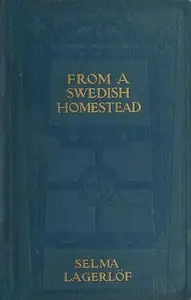"The Home; Or, Life in Sweden" by Fredrika Bremer is a story that looks into the everyday existence of the Frank family, led by Judge Frank and his wife, Elise, during the 1800s. The story focuses on their family ties, the atmosphere of their home, and significant social matters in Sweden. The novel starts with a lively discussion between Judge Frank and Elise about home improvements, which quickly becomes a display of their loveable family connection. The introduction of Assessor Munter, a witty friend, adds insightful humor to their family life, creating a vivid image of their relationships and the issues they face. The story especially focuses on the mother's tough but caring role as she balances her children's different personalities with her own dreams of becoming a novelist, all while maintaining the warmth and love within their home.

The Home; Or, Life in Sweden
By Fredrika Bremer
Amidst home renovations and aspirations, a family navigates love, laughter, and the complexities of Swedish society in their vibrant household.
Summary
About the AuthorFredrika Bremer was a Finnish-born Swedish writer and reformer. Her Sketches of Everyday Life were wildly popular in Britain and the United States during the 1840s and 1850s and she is regarded as the Swedish Jane Austen, bringing the realist novel to prominence in Swedish literature. In her late 30s, she successfully petitioned King Charles XIV for emancipation from her brother's wardship; in her 50s, her novel Hertha prompted a social movement that granted all unmarried Swedish women legal majority at the age of 25 and established Högre Lärarinneseminariet, Sweden's first female tertiary school. It also inspired Sophie Adlersparre to begin publishing the Home Review, Sweden's first women's magazine as well as the later magazine Hertha. In 1884, she became the namesake of the Fredrika Bremer Association, the first women's rights organization in Sweden.
Fredrika Bremer was a Finnish-born Swedish writer and reformer. Her Sketches of Everyday Life were wildly popular in Britain and the United States during the 1840s and 1850s and she is regarded as the Swedish Jane Austen, bringing the realist novel to prominence in Swedish literature. In her late 30s, she successfully petitioned King Charles XIV for emancipation from her brother's wardship; in her 50s, her novel Hertha prompted a social movement that granted all unmarried Swedish women legal majority at the age of 25 and established Högre Lärarinneseminariet, Sweden's first female tertiary school. It also inspired Sophie Adlersparre to begin publishing the Home Review, Sweden's first women's magazine as well as the later magazine Hertha. In 1884, she became the namesake of the Fredrika Bremer Association, the first women's rights organization in Sweden.















